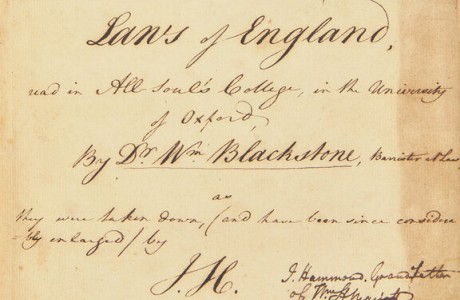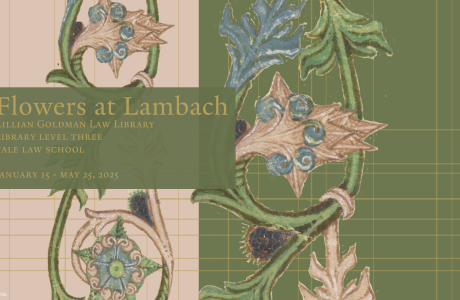Life and Law in Early Modern England - Practitioner manuals
William Lambarde, 1536-1601. The duties of constables, borsholders, tythingmen, and such other lowe ministers of the peace (London, 1584). Rare Book Collection, Lillian Goldman Law Library.

William Lambarde, 1536-1601. Eirenarcha, or Of the office of the iustices of peace, in foure bookes (London, 1599). Rare Book Collection, Lillian Goldman Law Library; acquired with the John A. Hoober Fund.

William Lambarde, 1536-1601. The dueties of constables, borsholders, tythingmen, and such other lowe and lay ministers of the peace (London, 1599). Collection of the Elizabethan Club of Yale University; gift of Henry H. Anderson, Jr. in memory of Wilmarth S. Lewis, December 1983.

The attourney of the Court of Common Pleas: or his directions and instructions concerning the course of practice therein, with sundry observations thereupon, &c. / written by G.T. of Staple Inne, gent. (London, 1642). Rare Book Collection, Lillian Goldman Law Library; acquired with the John A. Hoober Fund.

Institutions or principall groundes of the lawes and statutes of England (London, 1570). Rare Book Collection, Lillian Goldman Law Library.

William Lambarde’s Eirenarcha, or, The Office of the Justices of Peace (1582), was printed twelve times before 1620 and served as a standard authority on county administration. After being called to the bar in 1567, Lambarde dedicated his professional life to jobs ranging from commissioner of the peace to master of chancery and deputy keeper of the rolls. His scholarly writings also included his Archaionomia (1568), the second book to print Old English, which collected and paraphrased Anglo-Saxon laws and treaties, together with the laws of Edward the Confessor and William I. Lambarde may have sat for parliament under Elizabeth, at which point he famously disobeyed the Queen’s 1566 demand that parliament no longer discuss the possibility of her marriage.
With the advent of the printing press, standardized legal procedures continued to evolve. Numerous printed guides provided practicing lawyers and county administrators with model oaths as well as explanations of various aspects of the common law. Printed guides also helped to spread knowledge of the law. For example, in the 1570 Institutions or Principall Grounds of the Laws and Statutes of England, published by the famed Elizabethan printer Richard Tottel, the author called for a clear understanding of the laws such that men may not say of the English that “we make very goodly and profitable laws but we use them not.”
– Justin Zaremby
“Life and Law in Early Modern England,” an exhibition marking the Centenary of the Elizabethan Club, is curated by Justin Zaremby with Mike Widener, and is on display February-May 2011 in the Rare Book Exhibition Gallery, Level L2, Lillian Goldman Law Library Yale Law School.


